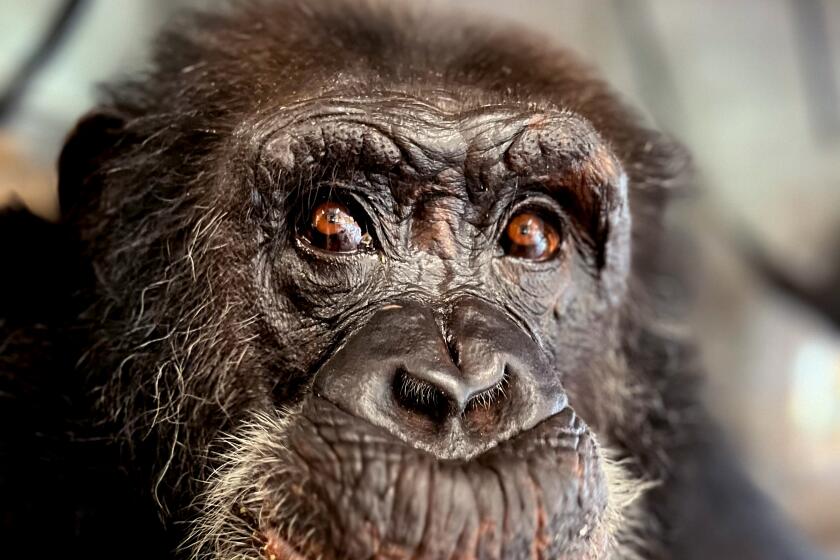Gap founder’s art trove remains homeless in S.F.
Gap founder Donald Fisher assembled a collection of some of the best contemporary art from the last 50 years and decided he wanted to build a museum for it in the heart of the Presidio, a historic landmark and national park.
After a two-year battle with preservationists, Fisher, 80, abandoned that ambition last month. Now the fate of his collection, which includes about a thousand works by such artists as Andy Warhol, Roy Lichtenstein and Alexander Calder and is conservatively valued in the tens of millions of dollars, has San Francisco’s art community fearful that the city could lose an irreplaceable cultural treasure.
“It would be an absolute crime if it left San Francisco,” said Dede Wilsey, president of the board that oversees the De Young and Legion of Honor, two of the city’s major art museums. “No one could amass that collection now. They couldn’t afford it, even in a recession.”
The collection, housed in a warehouse and at Gap headquarters in San Francisco, is open to scholars, and Fisher routinely loans pieces to museums. But until an agreement is reached, most of it will stay behind closed doors.
“You could very easily teach the history of art over the past 50 years with this collection,” said Hilarie Faberman, a curator at the Cantor Arts Center at Stanford University. Faberman said nearly every piece deserves to be displayed.
The collection, curators say, will probably be pursued by museums around the country.
Fisher would prefer to keep the art in San Francisco, said spokesman Alex Tourk, who added that Fisher and his family have received hundreds of e-mails from residents who don’t want the collection to leave.
But Tourk noted that Fisher, who declined to be interviewed, will consider different locations. Museums in Oakland; St. Paul, Minn.; and other cities have expressed interest. No major art museum in Los Angeles has come forward.
There are also rumors that Fisher might house his collection in the San Francisco Museum of Modern Art, where he is a board member. He has negotiated with the museum in the past and still considers the option open. In addition, the De Young Museum is pursuing the collection.
“His priority is to keep the collection in San Francisco, and that’s as detailed as he’s going to get,” Tourk said. “There isn’t a site that’s on a list as his No. 1 priority.”
When Fisher revealed his plan in 2007 to display his collection in a new museum, many residents and members of the art community considered it a generous gift from one of the city’s prominent philanthropists.
But the project quickly became stuck in contention. Fisher had wanted to build a 100,000-square-foot museum of sharp-edged architecture near 1890s Army barracks in the Presidio’s Main Post, which marks the site of the Spanish fort established in 1776 and was an important U.S. Army post for more than 140 years.
Many neighbors, historic preservationists and environmentalists denounced the proposal and submitted negative reviews to the Presidio Trust, which oversees the space.
The Presidio, considered the birthplace of San Francisco, is preserved as a grassy park where visitors can take in sweeping views of the bay and stroll through historic military sites. Opponents of Fisher’s plan said the museum would ruin the character of the Main Post, considered one of the most valuable features of the Presidio.
Fisher finally relented, concluding that forging an agreement to build at the site was impossible. Since then, he has not spoken about his plans. His reticence has opened the door for speculation.
The San Francisco Chronicle reported recently that the SFMoMA may be planning to expand into a site that currently houses a fire station, which it could use to house Fisher’s collection. Museum officials declined to comment, and Tourk said Fisher has not been approached about the idea.
The potential San Francisco sites are all likely to present some difficulties.
The amount of curatorial control the Fisher family would retain if they donated the collection to the San Francisco Museum of Modern Art was a point of past discussion, Tourk said. In addition, Fisher would require that the collection receive considerable space, about 100,000 to 150,000 square feet, roughly half the size of the SFMoMA.
“The collection is of such depth and importance that it could stand alone in its own museum,” said Paul Schimmel, chief curator for the Museum of Contemporary Art in Los Angeles. “These collectors -- and there are only a handful of them in the world -- want to know how their collections will be used.”
Fisher is also mulling an attempt to build near the site of his first proposal, Tourk said.
Many opponents of Fisher’s previous plan said they would support a plan to build at a less sensitive location.
But San Francisco has a reputation for letting vocal interest groups sway large development projects, and any new plan could be bogged down in another long planning process.
“The worst thing would be to start again and then have some group begin to oppose it,” said Wilsey, who noted that Fisher had hoped to complete the museum quickly. “I think he couldn’t handle more of this.”
Fisher’s friends say he remains upset about the controversy over his proposed museum.
“He’s an urgent person,” said Toby Rosenblatt, who served on the board of the Presidio Trust with Fisher. “He gets an idea in his head, and he wants to get it done.” --
More to Read
The biggest entertainment stories
Get our big stories about Hollywood, film, television, music, arts, culture and more right in your inbox as soon as they publish.
You may occasionally receive promotional content from the Los Angeles Times.










